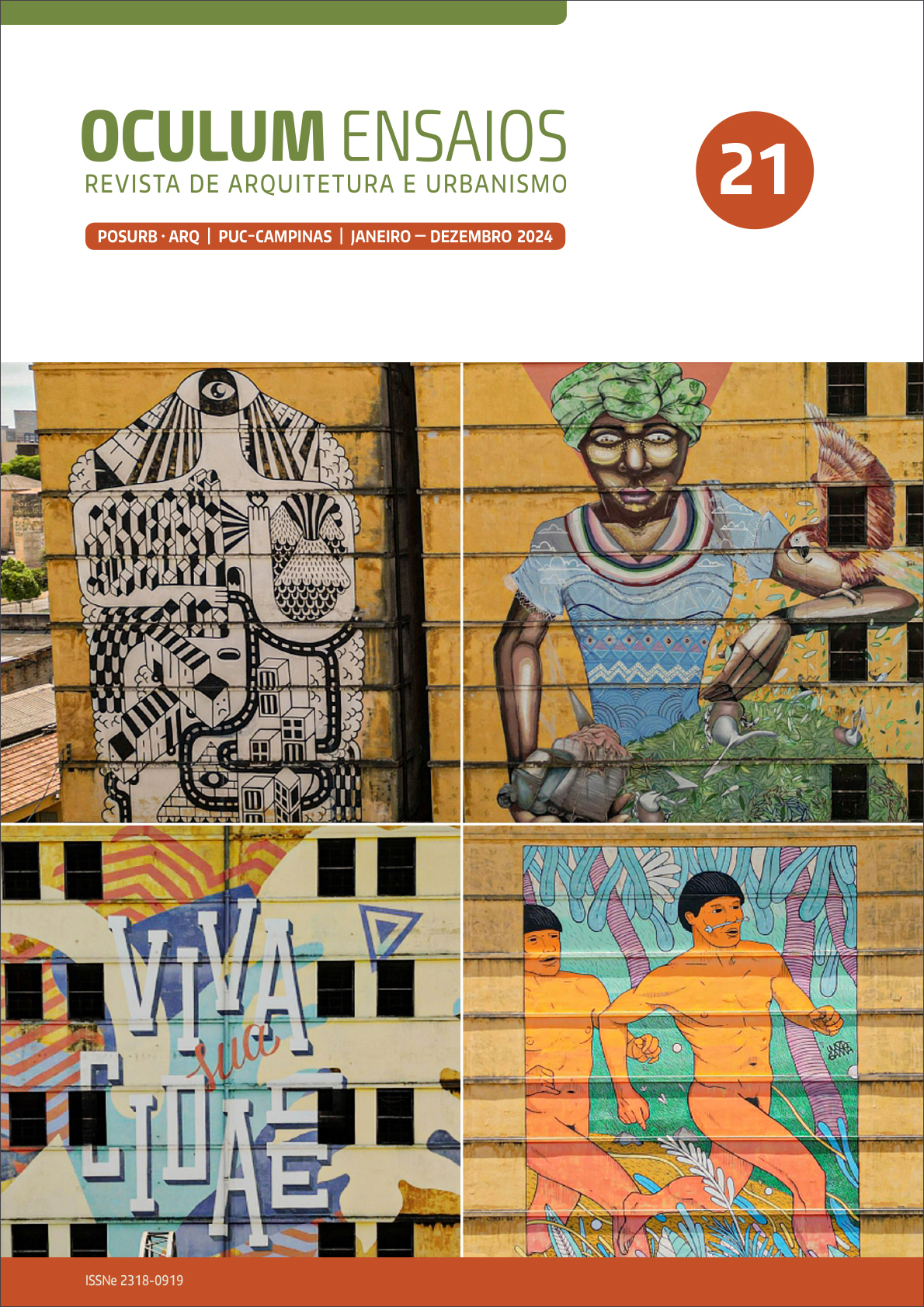Daylighting performance in light wells of residential buildings
DOI:
https://doi.org/10.24220/2318-0919v21e2024a5560Keywords:
Residential building, Urban legislation, Computational SimulationAbstract
The light well is an architectural solution used when there is no possibility of lightening naturally an internal environment from the external sides of the building. Different Brazilian cities allow its use based on a formula to calculate its geometry. This work aims to identify whether the minimum dimensions determined by the urban legislation of Juiz de Fora (Minas Gerais) for the light well are sufficient to guarantee adequate natural lighting in the internal environments connected to it. To this end, computer simulations of light wells in buildings models with 2, 4, 6 and 8 floors were carried out, using the Grasshopper and ClimateStudio programs, plug-ins of the Rhinoceros software. The lighting assessment metric used was Daylight Autonomy, which considers the mean percentage of occupancy hours throughout the year in which the sensors recorded illuminance equal to or greater than 150 lux. The results indicated that the current minimum areas indicated for satisfactory light in legislation do not allow environments to have adequate levels of illuminance. It can also be seen that the upper floors benefit from the increase in the diameter of the well; however, the increase in diameter is not enough to compensate for the loss of light due to the increase in the depth of the well. Results at different times of the solstices and the distribution of lighting in the environments are discussed. The study clearly indicates the need for a re-study of the city’s urban legislation.
Downloads
References
Acosta, I.; Navarro, J.; Sendra, J. J. Towards an analysis of the performance of lightwell skylights under overcast sky conditions. Energy and Building, v. 64, p. 10-16, 2013.
Ahadi, A. A.; Saghafi, M. R.; Tahbaz, M. The optimization of light-wells with integrating daylight and stack natural ventilation systems in deep-plan residential buildings: A case study of Tehran. Journal of Building Engineering, v. 18, p. 220-224, 2018.
Ahadi, A. A.; Saghafi, M. R.; Tahbaz, M. The study of effective factors in daylight performance of light-wells with dynamic daylight metrics in residential buildings. Solar Energy, v. 155, p. 679-697, 2017.
Ahmed, B. M. A.; Nassar, K. M.; Asr, A. Parametric Study of Light-Well Design for Day-Lighting Analysis under Clear Skies. International Journal of Engineering and Technology, v. 6, n. 1, p. 81-85, 2014.
Associação Brasileira de Normas Técnicas. NBR 15215-1: iluminação natural – Parte 1: conceitos básicos e definições. Rio de Janeiro: ABNT, 2005.
Associação Brasileira de Normas Técnicas. NBR ISO/CIE 8995-1: Iluminação de ambientes de trabalho – Parte 1: Interior. Rio de Janeiro: ABNT, 2013.
Bahia, S. R.; Guedes, P. A. Elaboração e atualização do código de obras e edificações. 2. ed. Rio de Janeiro: IBAMDUMA; Eletrobrás-PROCEL, 2012.
Bolssoni, G. C.; Laranja, A. C.; Alvarez, C. E. Disponibilidade de iluminação natural em ambiente interno orientado para poço de iluminação. Cadernos PROARQ, v. 31, p. 101-117, 2018.
Bugeat, A.; Beckers, B.; Fernández, E. Improving the daylighting performance of residential light wells by reflecting and redirecting approaches. Solar Energy, v. 207, p. 1434-1444, 2020.
Chartered Institution of Building Services Engineers. Guide L Sustainability. Londres: CIBSE, 2020.
Didoné, E. L.; Pereira, F. O. R. Simulação computacional integrada para a consideração da luz natural na avaliação do desempenho energético de edificações. Ambiente Construído, v. 10, p. 139-154, 2010.
Fadzil, S. F. S.; Al-Absi, Z. A. Daylight distribution patterns in light wells in residential buildings in Penang, Malaysia. WIT Transactions on Ecology and the Environment, v. 210, p. 77-86, 2016.
Freewan, A. A. Y.; Gharaibeh, A. A.; Jamhawi, M. M. Improving daylight performance of light wells in residential buildings: Nourishing compact sustainable urban form. Sustainable Cities and Society, v. 13, p. 32-40, 2014.
Goharian, A.; Daneshjoo, K.; Yeganeh, M. Standardization of methodology for optimizing the well aperture as device (reflector) for light-wells; A novel approach using Honeybee & Ladybug plugins. Energy Reports, v. 8, p. 3096-3114, 2022.
Instituto Brasileiro de Geografia e Estatística. Censo Brasileiro de 2022. Rio de Janeiro: IBGE, 2022.
Juiz de Fora. Compilação da Legislação Urbana: Atualização. 3. ed. Juiz de Fora: Prefeitura de Juiz de Fora, Secretaria de atividades urbanas, 2019.
Moraes, J. S.; Alcojor, A. M.; Bittencourt, L. S. Análise de indicadores de desempenho da iluminação artificial em ambientes residenciais. Pesquisa em Arquitetura e Construção, v. 9, p. 35-46, 2018.
Reinhart, C. F.; Mardaljevic, J.; Rogers, Z. Dynamic Daylight Performance Metrics for Sustainable Building Design. The Journal of the Illuminating Engineering Society, v. 3, p. 7-31, 2013.
Yu, F.; Wennersten, R.; Leng, J. A state-of-art review on concepts, criteria, methods and factors for reaching ‘thermal-daylighting balance’. Building and Environment, v. 186, 2020.













